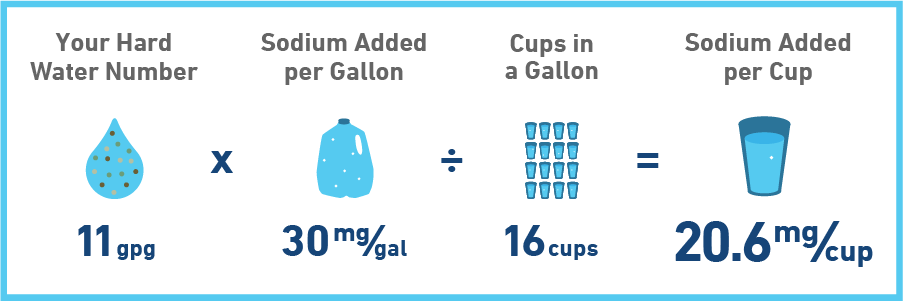Myth: Water softeners make your water salty
Won’t I taste a difference?
Sodium is a naturally occurring mineral and is found in almost everything you consume—from apples and almonds to water and milk. And while sodium is used to soften water, one of the biggest misconceptions is that it makes your water noticeably salty. Luckily, that’s not the case.
Your daily dose
According to the Dietary Guidelines for Americans, the recommended limit for sodium is less than 2,300 mg a day. The average American consumes about 3,400 mg a day, but the vast majority of sodium comes from table salt and processed and prepared foods, like cold cuts, canned soups, fast food, and frozen dinners. Here are the sodium levels of some common food items:
- An 8-ounce glass of low-fat milk contains about 120 mg of sodium
- One egg contains 59 mg of sodium
- An 8-ounce glass of orange juice contains about 25 mg
- A can of soda contains 40-45 mg
- Depending on the brand, a standard 1-ounce slice of bread has between 80 and 230 mg of sodium
- A teaspoon of regular table salt contains 2,300 mg of sodium
Sodium in Softened Water
The amount of sodium present in drinking water—even after softening—does not represent a significant percentage in a person’s daily intake. During the regeneration process, the resin beads that remove the calcium and magnesium (the hardness ions) in your water are flushed with a brine solution (made from the salt you add to your tank). This releases the calcium and magnesium ions from the beads and replaces them with sodium ions. The excess brine and hardness ion solution is then flushed from the system. This process adds just a little sodium to the overall water supply—and you definitely won’t taste it.
The exact amount of sodium present in soft water will vary based on how much hardness is being removed by the softener. The harder your water is, the more sodium ions that are being exchanged to make soft water. For example, someone with 11 grains per gallon (gpg) hardness would see an additional 20.6 mg of sodium per 8-ounce glass.
Once you have your hard water number, this is how you can calculate the additional amount of sodium that will be added to your water:

Minimizing sodium consumption
Still, you may choose not to drink soft water because of the sodium in it. Not to worry, you can still enjoy the benefits of soft water, such as reduced stains and lime scale, more efficient soap usage and longer appliance life, while having another option for the water you drink.
One solution is to use potassium chloride instead of sodium chloride pellets to soften your water. Another option is a reverse osmosis drinking water system installed along with your water softener. Reverse osmosis removes 95%+ of “everything” in the water, including sodium.
Of course, if sodium is still a concern, your physician is the best person to consult for further discussion.
When you do the math, water softeners add a very small amount of sodium to your diet. And considering the many benefits of installing a water softener, such as preventing damaging scale buildup in your pipes and appliances while saving on energy, lotions and soaps, installing this appliance to battle your hard water woes is a win-win.
